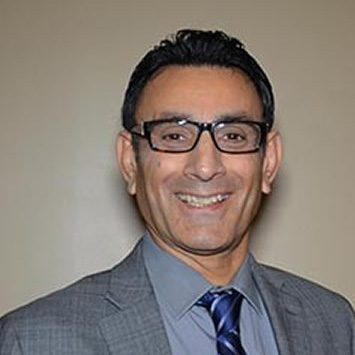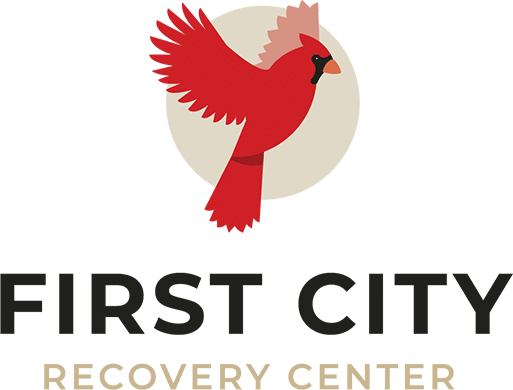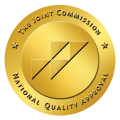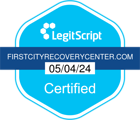A Look at Drug Use in Indiana
If you have a substance use disorder, you are not alone. The use of drugs and alcohol is prevalent in America, with some areas seeing epidemic drug and alcohol use. One example is Indiana. In 2021, Indiana had the ninth highest rates of drug use behind Washington D.C., West Virginia, Missouri, Colorado, New Mexico, Nevada, Delaware, and Michigan. At First City Recovery Center, we believe that addiction to drugs and alcohol is a disease, and we must treat the disease with compassion and respect. Our goal is to help you withdraw from drugs and alcohol to achieve long-term recovery. Before we describe our comprehensive addiction treatment, let’s look at the most abused drugs in Indiana.
Table of Contents
ToggleAlcohol
It is common for Americans to drink alcohol in restaurants or during parties after a hard day at work. However, inappropriate alcohol use (binge drinking, excessive drinking, underage drinking, and drinking while pregnant) has become a problem in the United States.
What are some possible results of an alcohol use disorder?
• High blood pressure
• Liver disease
• Stroke
• Digestive problems
• Cancer
• A weak immune system
• Mental health problems
• Death
Alcohol Use in the U.S.
In America, between 2011 and 2015, alcohol use disorders resulted in approximately 95,000 deaths. Also, more than 4,000 people under 21 die every year due to car crashes, falls, drownings, suicide, and homicide due to alcohol-related causes.
Alcohol Use in Indiana
In Indiana, alcohol is the most used drug. According to the Indiana Family and Social Services Administration May 2017 report, approximately 5.9% of Indiana residents had an alcohol use disorder in the previous year, with the highest number of abuses found in the 18- to 25-year-old group. From 2000 to 2015, approximately 6,571 Indiana residents died from alcohol-induced causes. Within the number of admissions to substance use disorder treatment centers in Indiana, more than one-third were admitted due to alcohol.
Tobacco
Smoking is legal in all 50 states, but it is one of the worst things you can do to your body. Those who smoke reduce their life expectancy by approximately 10 years. The good news is that our comprehensive addiction treatment center can help you quit smoking for good.
What are some conditions related to tobacco use disorder?
• Heart disease
• Lung disease
• Stroke
• Respiratory illnesses
• Type 2 diabetes
• Cancer
If a person smokes during pregnancy, it can lead to premature births and sudden infant death syndrome (SIDS.) Second-hand smoke is also harmful to adults and children.
Tobacco Use in the U.S.
The use of tobacco is the top cause of disease, preventable disability, and death in the United States. In 2019, approximately 14% of Americans aged 18 years and older currently smoked. While the rates of smoking have declined, there are still more than 16 million people in the U.S. living with smoking-related health conditions.
Tobacco Use in Indiana
As of May 2017, approximately one-third of Indiana residents 12 and older used tobacco products, with the highest rate among 18 to 25-year-olds. Furthermore, one-fourth of Indiana residents ages 12 and over smoke cigarettes. That’s significantly higher than the overall American smoking percentage. This makes Indiana the 12th highest in the nation regarding smoking. More individuals die from tobacco in Indiana than the U.S. median.
Marijuana
Marijuana is the dried part of the cannabis plant. When consumed, such as smoked, the user achieves a high. Although there is medical marijuana, there are harmful effects of marijuana use.
What are some conditions of a marijuana use disorder?
• Mood changes
• Impaired memory
• Delusions
• Hallucinations
• A weakened immune system
• Respiratory problems
• An increase in the risk of cancers and heart attacks
Marijuana Use in the U.S.
In the U.S. in 2020, marijuana was used by approximately 18% of the population over the age of 12, or roughly 49.6 million people. About 5%, or roughly 14.2 million people, had a cannabis use disorder.
Marijuana Use in Indiana
As of May 2017, 20.8% of Indiana residents used marijuana. This is significantly higher than the national average. Marijuana is illegal in Indiana for both medical and recreational use. However, despite that, marijuana is the most used and abused drug in the state. Most of it comes from the southwest Mexican border.
Cocaine
Cocaine, from the coca plant native to South America, is one of the illegal drugs that are highly addictive. It is a stimulant that ramps up your energy, attention, and alertness.
What can result from cocaine use?
• Anger
• Depression
• Paranoia
• Decreased appetite
• Headaches
Serious complications can include convulsions, lung damage, heart attacks, long-term changes to the brain, and stroke.
Cocaine Use in the U.S.
As of 2019, the National Institute on Drug Abuse reports that approximately 2% of the American population 12 or older, or approximately 5.2 million people, have used cocaine in the past 12 months. Approximately 0.5% of the American population aged 12 or over, or about 1.3 million people, had a cocaine substance use disorder in the past 12 months. Over 15,000 people died from an overdose of cocaine in 2019.
Cocaine Use in Indiana
In Indiana, as of May 2017, approximately 1.2% of Indiana residents 12 and older used cocaine in the past year. However, substance use disorder treatment for cocaine decreased from roughly 25.5% in 2000 to 10.9% in 2017. At First City Recovery Center, we are committed to helping you rid yourself of a cocaine use disorder.
Heroin
Heroin is an illegal drug that continues to be a problem in America. It is a derivative of morphine that is obtained from the opium poppy plant and is highly addictive. Heroin is an opioid. Opioids include heroin, fentanyl, oxycodone, hydrocodone, codeine, and morphine.
Heroin, like all opioids, is considered a “downer.” All opioids interact with the opioid receptors on the nerve cells in the brain and body. They affect the brain’s ability to perceive pain.
What are the long-term effects of heroin use?
• Infection of the heart valves and lining
• Collapsed veins
• Liver disease
• Abscesses
• Overdose and death
The more heroin you use, the more tolerance you develop, which means that you need even more heroin to get “high.” The body becomes physically dependent on heroin, resulting in severe withdrawal symptoms such as muscle and bone pain, vomiting, diarrhea, insomnia, and cold flashes. At First City Recovery Center, we are full-service experts at helping clients withdraw and rehabilitate from a heroin use disorder.
Heroin Use in the U.S.
For Americans 12 or older in 2020, approximately 0.3%, or some 902,000 people, used heroin in the previous 12 months. About 0.2%, or 691,000 individuals, had a heroin use disorder during the past 12 months, and in 2019, roughly 14,000 individuals died from a heroin overdose.
Heroin Use in Indiana
In Indiana in 2014, approximately 16% of people entered Indiana treatment centers for help with heroin addiction. Caucasian women and people under the age of 35 have the highest rates of heroin use in the state. There has been a significant number of deaths due to heroin in the past 10 years. There were seven deaths in 2005 but 239 deaths in 2015.
Methamphetamine
Methamphetamine, or “meth,” use in the United States is prevalent in certain areas. Meth is a powerful and highly addictive stimulant. Meth is derived from amphetamine used initially in bronchial inhalers and nasal decongestants. However, meth is much more potent in reaction to the central nervous system. The U.S. Drug Enforcement Administration classifies meth as a Schedule II stimulant. That means that it is legally available only through a nonrefillable prescription.
What can meth do to the body?
Although you receive an intense high from meth in the short term, the high fades, leading to irritability and depression. Long-term meth use can lead to:
• Skin and tooth damage
• Destruction of the dopamine cells in the brain, leading to psychosis, paranoia, and other issues
• High blood pressure
• High cholesterol
• A weakened immune system
• Kidney damage
• Heart disease and cardiac arrest leading to death
Methamphetamine Use in the U.S.
In the U.S. in 2020, 0.9% of individuals 12 or older, or about 2.6 million people, reported having used meth in the past 12 months. Approximately 0.6%, or roughly 1.5 million people, had a methamphetamine use disorder during the previous 12 months, and about 16,160 died from meth overdose in 2019.
Methamphetamine Use in Indiana
Although no recent state estimates for meth use among the general population in Indiana are available, the number of clandestine methamphetamine labs seized has reduced in recent years. In fact, approximately 1,700 lab seizures and 1,500 arrests occurred in 2013, and that number dropped to around 940 lab seizures and 620 arrests in 2016.
Prescription Drugs
Prescription drugs are legally prescribed by a medical professional. The three types of prescription drugs abused most often are opioids, depressants, and stimulants. Opioids, such as oxycodone and fentanyl, reduce pain; depressants, such as Valium and Xanax, reduce anxiety; stimulants, such as dextroamphetamine, help treat attention deficit hyperactivity disorder or ADHD.
Prescription Drug Use in the U.S.
In the United States, 6% of the population, or around 16 million people, abuse prescriptions. Two million, or 12%, of prescription drug users have a prescription drug use disorder. About 82% of pharmacy-filled prescriptions are opioids.
What can happen to the body when someone has an opioid prescription drug use disorder?
• Confusion
• Poor coordination
• Drowsiness
• Slowed breathing
• Nausea
• Constipation
The more a person uses opioids, a tolerance develops, which requires increased doses to relieve the pain. We must note that one of the worst is fentanyl. Accidental ingestion of fentanyl represents one of the greatest dangers.
Prescription Drug Use in Indiana
In 2016, over 11 million prescription drugs were prescribed in Indiana, with more than half of these being opioids. Approximately 28% of substance use treatment program admissions in Indiana involve someone with a prescription drug use disorder, with roughly 14.4% indicating a dependence.
There’s hope if you are suffering from a drug or alcohol problem in Indiana. Many treatment centers are available in the Midwest, including First City Recovery Center, which is based in Kokomo, Indiana. Because anyone from young to old can develop a substance use disorder, we have tailored treatment programs for all ages. We offer outpatient rehab services, partial hospitalization treatment, intensive outpatient treatment, and post-traumatic growth treatment, as well as therapies such as cognitive behavioral therapy, motivational interviewing, family therapy, and group therapy. At First City Recovery Center we have a transitional living facility for clients who need 24/7 post-treatment. Contact us at First City Recovery Center at (877) 595-3330.

MD, Psychiatrist
Dr. Vahid Osman, MD is a psychiatry specialist in Indianapolis, IN.
Dr. Osman completed a residency at Austin State Hospital. He has over 32 years of experience in Psychiatry & Behavioral Health. He is board certified by the American Board of Psychiatry and Neurology.




